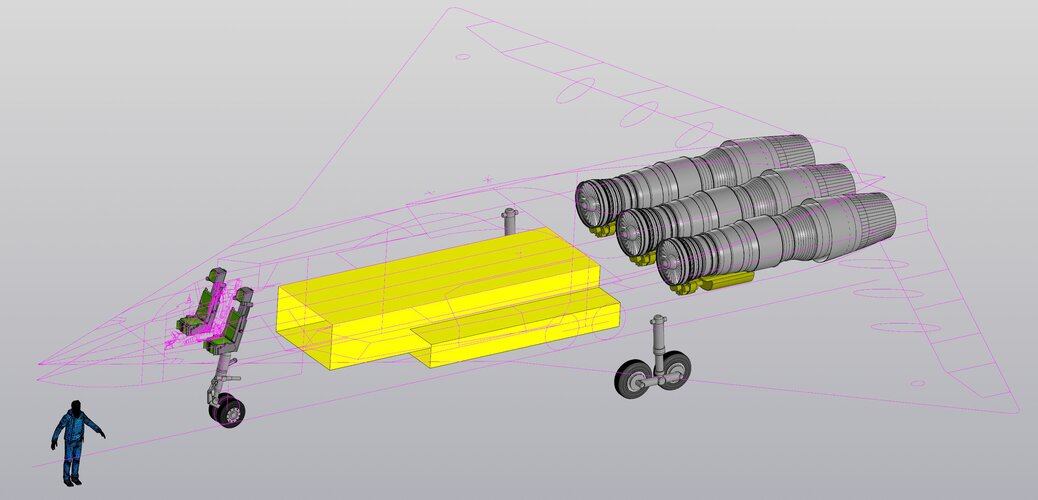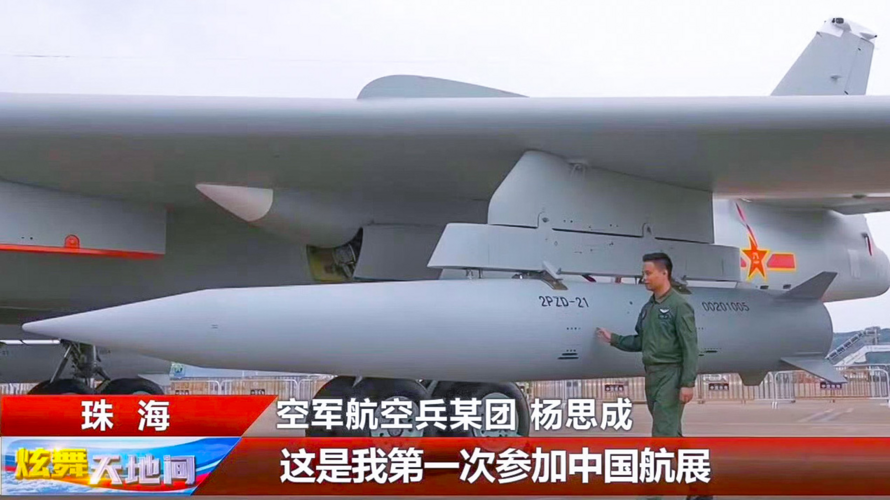I'm back!
As said before, if that is a tri-engined aircraft, probably a twin Turbojet with a turbofan. You would use the fan as range extender and keep the Jets burning for performances domain (TakeOff, acceleration, combat).
Then if a twin, the dorsal inlet might add the airflow needed for cruise, keeping the carret inlets small enough to make the S-duct compatible with volume restricted arrangement.
Then people see the dorsal as a DSI. But if that was simply a wall that separate airflow from the left and right engines?
The experience from the TACIT BLUE was that it's a pain in the butt trying to run two engines through a common inlet. One engine will eat all the airflow and prevent the other one from starting unless you start both within 30sec of each other, every time.
A 21 meter long, heavy and complex CCA platform? I don't think so.
Just means it's not attritable, or at least no more attritable than a manned plane.
Adding inlets for a new engine would be a #$%, but "fixing" it by removing an engine and resizing the inlets would be comparatively easy. New inlets and a different aft fuselage plug. Were this scenario true, they already did the design work for a twin with more powerful engines. The difficult redesign work was to add the engine/inlet area.
I'm seeing alot of speculation, but what's the solid proof that this is an actual fighter design and not just a test vehicle like the x-29?
Size, mostly.
The X-29 was built on a couple of F-5/T-38/F-20 airframes (I forget which). Those were too small to be a viable fighter at the time, but perfectly adequate for proving (or rather disproving) the benefits of the FSW. Had the USAF intended to push for a direct-to-combat plane demonstrator, they would have used the F-16 FSW instead, since that would allow for going straight to a viable fighter.
The closest this beast is to a test vehicle is in the sense of the YF-22/YF-23, more or less full sized, using the intended engines (or prototypes thereof), and very close to the final form of the actual fighter/bomber.
Two engines - two problems
Three engines - three problems
The required range cannot be achieved with three engines. Have you ever wondered why modern passenger planes have only two engines?
Because CFM56s (and newer engines, but it was the CFM56s that started it) are so absurdly reliable that it literally makes global news when one has to shut down in flight, let alone has more significant issues.
This allowed the certification authorities to relax enough to allow twin engine planes to fly over ocean for long distances.
It depends on how you are approaching air-combat. If you are primarily relying on BVR jousting (and trying to get the first shot off) - your 'close range' might be 50 km or 70 km... ranges where sustained cruise and supersonic turn circles matter more.
That might make sense for a design with a very powerful radar (say, powered by a third engine), VLO (tailless diamond design), super cruise, and VLRAAM missiles...
It is quite possible that the J-20 pilots would end-up using the Mk.1 Eyeball... but this new aircraft might only experience BVR (and could use a degree of sensor fusion if it was ever forced by circumstances into WVR).
Part of me is with you - give me analogue dials as a back-up, maybe a gun in case the missiles run out - but I suspect that we're moving beyond that - and this design could probably coordinate with other assets to make sure it keeps its distance.
The BVR joust concept did not survive contact with reality in the 1960s, and the requirements for a positive visual ID.
Plus, we just had evidence that IFF systems still are not perfect (Super Hornet shootdown).
So I'm expecting a need for hi-def IRST/EODAS systems to make sure you're pointing a missile at a bandit, and not a friendly that happens to be a long way from where they think they are.
Regarding the black canopy, recently PLAN had emphasized heavily in the online press the usage of blinding laser with not an ounce of shame. Seems that would explain the extreme tint of their glazing.
I see they are admitting to intending to commit war crimes. How ...
convenient.
Time again for NATO reporting name suggestions....

If it´s a 'J-36': Fatnose
If it´s a 'JH-36': Fatboy
If it´s a 'H-36': Boxer (as Bill Sweetman came up with)
And just for the eventuality of a future variant without the third engine, respectively:
'Fatnose Slim'
'Fatboy Slim'
'Slim Boxer'
I like those!





